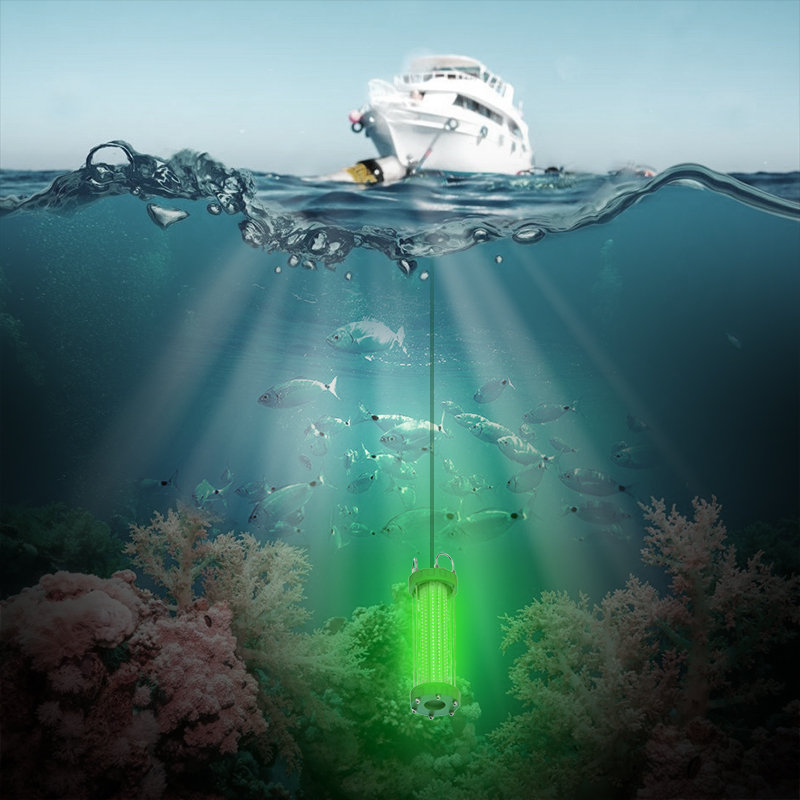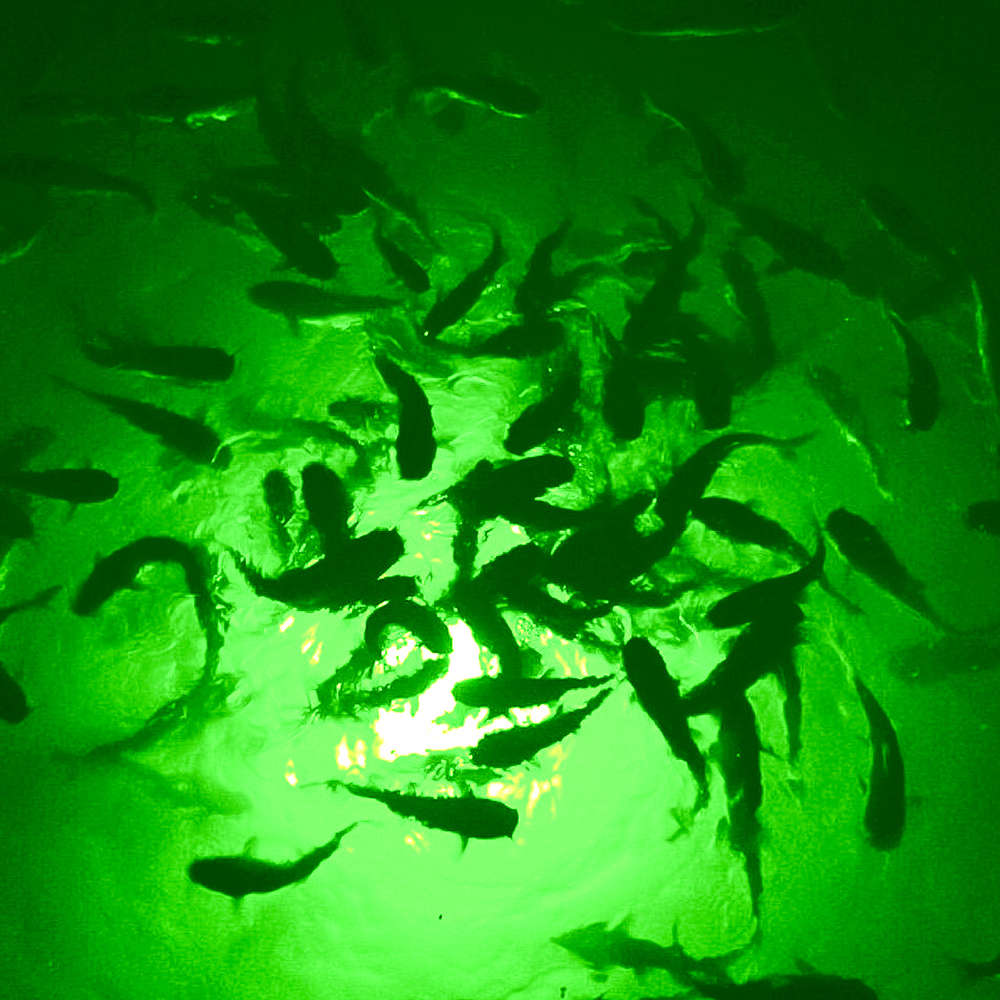Fish attracting light has become a popular technique among anglers seeking to improve their fishing success. This method draws fish closer to the surface, making them more accessible for catch. Understanding how these lights operate can significantly enhance one’s fishing experience.
The science behind fish attracting light lies in its ability to mimic natural phenomena. Whether it’s the glow of the moon or the sparkle of bioluminescent organisms, these lights can lure various species, particularly during low-light conditions. Anglers can strategically use these lights to increase their chances of attracting fish in both freshwater and saltwater environments.
By incorporating fish attracting light into their fishing strategies, enthusiasts can optimize their time on the water. Whether fishing from a boat or the shore, these lights can provide a tactical advantage to those looking to reel in their next big catch.
Types of Fish Attracting Lights
Fish attracting lights come in various forms, each designed for specific fishing environments and conditions. The primary types include submersible fish lights, floating fish lights, and dock lights, each offering distinct features and benefits for anglers.
Submersible Fish Lights
Submersible fish lights are designed to be submerged underwater, typically suspended from a boat or dock. They produce bright illumination, attracting plankton and, in turn, small fish, which lure larger predators.
These lights often use LED technology for energy efficiency and longevity. Common colors include green and blue, as these wavelengths penetrate the water effectively. The light’s intensity and depth play a significant role in their effectiveness, with many models adjustable for different fishing conditions.
Proper placement is crucial. They should be positioned in areas where fish are known to gather, such as near reefs, estuaries, or drop-offs.

Floating Fish Lights
Floating fish lights rest on the surface of the water, often designed with buoyant materials. These lights can be used in both fresh and saltwater environments. They are generally easy to deploy and do not require an anchoring setup.
These lights commonly feature LED bulbs in colors that attract a variety of fish species. They provide a widespread glow that can cover a larger area. This is beneficial for fishing situations where wider coverage is necessary, such as in lakes and rivers.
Adjustments can be made based on water clarity and time of day. This adaptability makes floating lights versatile for many fishing scenarios.
Dock Lights
Dock lights are installed near docks or piers to attract fish close to shorelines. Their design allows light to penetrate the water while providing illumination for anglers on the dock.
They can vary in power, typically using LED or incandescent bulbs. Dock lights often have built-in features like motion sensors or timers, enabling automatic operation.
The positioning of dock lights is essential. They work best when placed at strategic angles to illuminate deep water or areas of known fish activity, enhancing the fishing experience without excessive disturbance.
Benefits of Using Fish Attracting Lights
Fish attracting lights offer several advantages for anglers and marine ecosystems. They enhance fishing success, create a captivating atmosphere, and support aquatic habitats. Each of these benefits plays a significant role in promoting effective fishing practices and fostering marine health.
Increased Fishing Success
Using fish attracting lights can significantly boost an angler’s success rate. These lights draw in baitfish, which in turn attracts larger predator fish. The visibility offered by the lights increases the chances of catching fish, especially in low-light conditions.
- Target Species: Species like bass, crappie, and catfish are known to respond well to artificial lights.
- Time of Day: Nighttime fishing becomes more productive as fish are often more active in the lit areas.
Anglers can position lights at strategic locations such as near docks, jetties, or reefs. This method optimizes the chances of encountering a variety of fish.
Enhanced Marine Ambiance
Fish attracting lights contribute to a visually appealing environment for nighttime fishing. The lights create a stunning display in the water, enhancing the overall fishing experience.
- Aesthetic Appeal: The glow can attract not only fish but also other marine creatures, including plankton and small crustaceans. This results in a vibrant underwater ecosystem.
- Experience for Anglers: The ambiance can make fishing more enjoyable and engaging, turning a simple fishing trip into a memorable outing.
The combination of light and water creates an atmosphere that many anglers appreciate, making their time on the water more enjoyable.
Aquatic Habitat Support
Fish attracting lights play a role in supporting aquatic habitats. The lights can foster a diverse ecosystem by providing a reliable food source for various marine species.
- Food Chain Enhancement: The light attracts phytoplankton, which serves as food for zooplankton, in turn attracting small fish and larger predators.
- Shelter and Protection: Columns of light may offer safety for smaller fish by providing shelter from larger predators.
By encouraging a thriving mobile food web, fish attracting lights can positively impact local marine life and contribute to sustainable fishing practices.
Installation and Maintenance
Effective installation and regular maintenance are crucial for optimal performance of fish attracting lights. This section covers the essential techniques for proper installation, routine maintenance tips to ensure longevity, and important safety considerations.
Proper Installation Techniques
When installing fish attracting lights, site selection plays a critical role. It is essential to choose locations that maximize light visibility underwater while minimizing obstructions. A depth of 10 to 20 feet is generally ideal for optimal light dispersion.
Mounting methods can vary based on the type of light. Common options include:
- Floating: Using buoys for surface placement.
- Fixed Mounting: Securing lights to docks or pilings.
- Submersible: Anchoring lights to the bottom securely.
Ensure electrical connections are waterproof and use marine-grade cables to prevent corrosion. Proper alignment enhances the total coverage area, attracting more fish effectively.
Routine Maintenance Tips
Regular maintenance helps sustain the functionality of fish attracting lights. Important maintenance tasks include:
- Inspecting Lights: Check for burnt-out bulbs or damage. Replace them promptly.
- Cleaning: Remove algae, dirt, and debris from lights to maintain brightness. Soft brushes or cloths work well for this.
- Testing Electrical Connections: Ensure connections are secure and free from corrosion. Use dielectric grease on connectors.
Maintenance frequency should be at least every few weeks. After significant weather events, a thorough check is essential to guarantee continued effectiveness.
Safety Considerations
Safety is paramount when installing and maintaining fish attracting lights. First, ensure all electrical work complies with local codes and regulations. Using GFCI (Ground Fault Circuit Interrupter) outlets minimizes the risk of electrical shock.
When working near water, use proper personal protective equipment (PPE), such as life vests and slip-resistant footwear. If deploying lights from a boat, ensure it is stable and anchored.
Avoid potential hazards, such as underwater obstacles, that could pose risks during installation or maintenance. Always inform others about ongoing activities in the area to promote safe operations.
Legal and Environmental Considerations
Compliance with regulations and understanding environmental impacts are crucial when utilizing fish attracting lights. This section addresses the necessary regulatory compliance and best practices for environmental sustainability.
Regulatory Compliance
Proper use of fish attracting lights often falls under local, state, and federal regulations. Regulations can vary significantly by region, impacting both the type and intensity of lights permitted.
Fishermen and commercial operators should consult local fishing authorities to ensure compliance. Key regulations may include:
- Permitting Requirements: Check if special permits are needed for using artificial lights in designated fishing areas.
- Usage Restrictions: Certain locations may have limitations on the time or intensity of light usage to minimize disruption to marine wildlife.
- Species Protection Laws: Regulations may protect specific species that can be adversely affected by artificial lighting.
Staying informed about these laws helps prevent legal repercussions and promotes sustainable fishing practices.

Environmental Impact and Best Practices
Использование fish attracting lights can alter local ecosystems, affecting both fish populations and non-target species. It is vital to consider these impacts and adopt best practices to minimize potential harm.
To reduce environmental effects, operators should:
- Use LED Lights: These consume less energy and produce less heat, reducing disturbance in aquatic habitats.
- Limit Usage Duration: Keeping lights on for shorter periods helps reduce stress on marine life during critical times such as spawning.
- Monitor Local Wildlife: Observing the behavior of target and non-target species can provide insights into the effects of lighting.
Implementing these practices contributes to healthier ecosystems and helps maintain sustainable fish populations.
